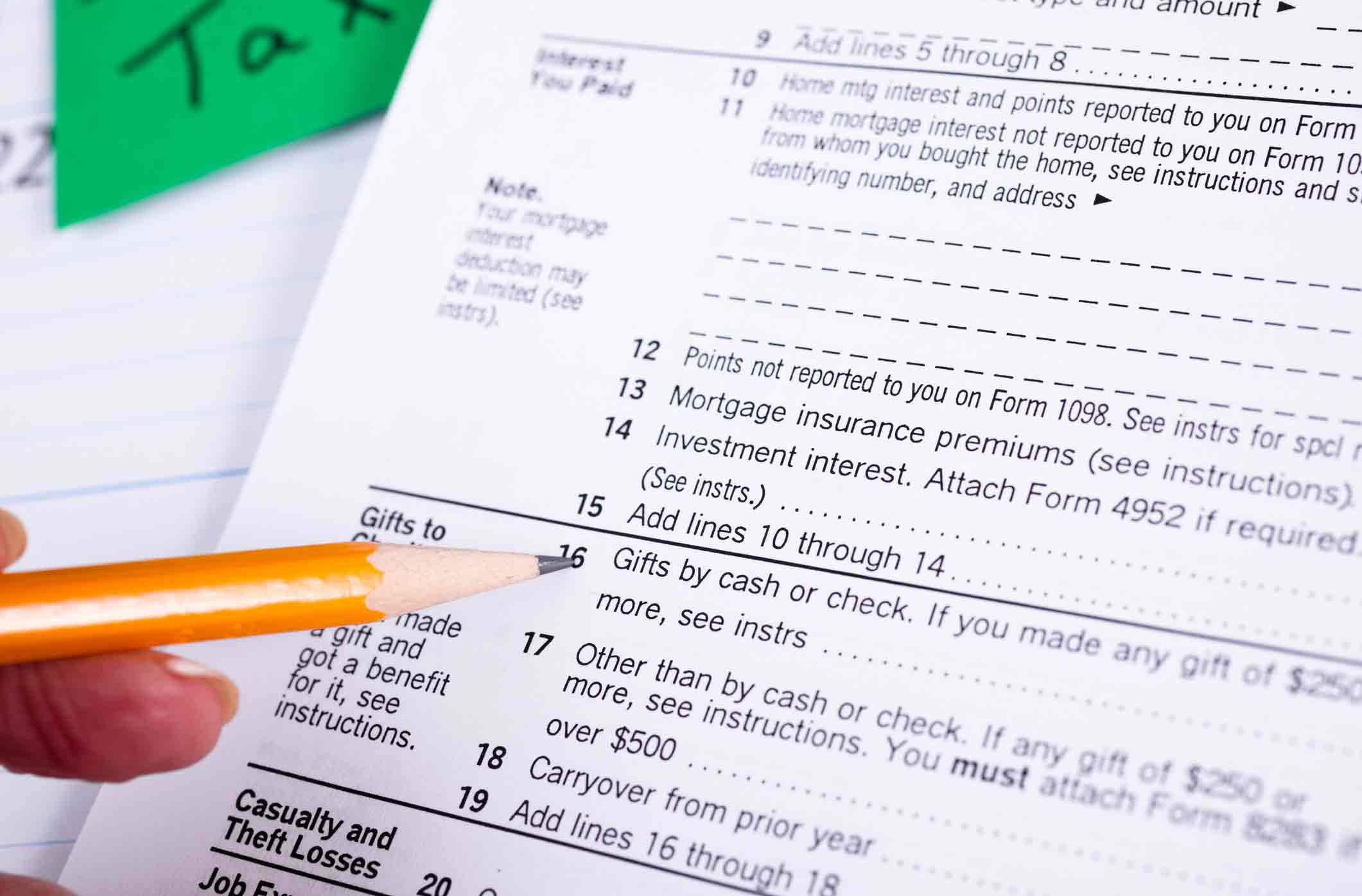Donate to Charity and Cut Your Tax Bill
There are still ways to donate and cut your tax bill. We give you four.


UPDATE: The CARES Act creates a new "above-the-line" deduction for up to $300 of charitable cash contributions in 2020. This write-off is only available to people who take the standard deduction. The law also suspended the 60%-of-AGI limit on cash donations to charity for people who itemize. For more information, see CARES Act Expands Tax Deductions for Charitable Giving .
You’re a charitable person. You’ve supported causes near and dear to your heart for as long as you can remember. And, quite frankly, you’re also used to getting a tax deduction for your charitable giving. You don’t donate just to get a tax break, but it’s nice to give and save money at the same time.
In the past, you always wrote off your charitable donations as an itemized deduction. However, since the 2017 tax reform law doubled the standard deduction, you might not be itemizing on your tax return anymore. If that’s the case, you’re probably worried about losing your tax break for charitable giving. But don’t be too concerned—there are still ways to donate and cut your tax bill. Here are four common strategies to consider.
From just $107.88 $24.99 for Kiplinger Personal Finance
Be a smarter, better informed investor.

Sign up for Kiplinger’s Free Newsletters
Profit and prosper with the best of expert advice on investing, taxes, retirement, personal finance and more - straight to your e-mail.
Profit and prosper with the best of expert advice - straight to your e-mail.
“Bunching”
One easy, do-it-yourself way to continue claiming charitable gifts as an itemized deduction is to “bunch” the donations that you would normally give over two or more years into a single year. The goal here is for your charitable donations—along with any other deductible expenses—to be high enough in that single year to exceed the standard deduction amount so that you can take advantage of the itemized deduction for charitable giving. In the other years, you hold off on giving and take the standard deduction—there’s no lost deduction if there’s no charitable giving.
Coming up with two or more years’ worth of donations can be tricky for many folks, though. “Not everyone has that kind of money sitting around,” says Jaime Eckels, a certified financial planner with Plante Moran Financial Advisors, “so it does take a little bit more thoughtfulness on accumulating funds in order to make these donations.”
Donor-Advised Funds
If you’re able to donate a large amount in a single year to cover several years of giving, but you don’t want your favorite charities to go without a donation for a year or more, a donor-advised fund (DAF) may be right for you. With a DAF, you make one large contribution to the fund (cash or assets) and deduct the entire amount as an itemized deduction in the year you make it. Money from the fund is then sent to the charities of your choice over the next two, three or more years when you’re claiming the standard deduction. Money in the fund can also be invested and grow tax-free. DAFs are not without some minor downsides. For example, you can’t change your mind. “It is an irrevocable decision,” warns Brian Vnak, vice president of the Wealth Enhancement Group. Watch out for fees and minimum contributions, too.
Gifting Appreciated Stock
If you own stock that has increased in value, consider donating it directly to a charity. You’ll not only get to claim the current value of the stock as an itemized deduction, but you’ll also avoid the tax on long-term capital gains (even if you take the standard deduction). Your itemized deduction is limited to 30% of your adjusted gross income, but you can carry forward any unused deductions for up to five years. Eckels also points out that the charity receiving the stock typically must have a brokerage account. Gifting appreciated stock “becomes really powerful when you pair it with the donor-advised fund,” says Vnak. So, instead of funding a DAF with cash, you can transfer stock into the fund. That allows you to front-load an even larger itemized deduction into a single year and sidestep the capital gains tax all at once.
Qualified Charitable Distributions
Seniors taking the standard deduction can still get a tax break for charitable giving by making a qualified charitable distribution (QCD) from a traditional IRA directly to a charity. QCDs generally aren’t included in your taxable income (although some of a QCD can be included if you’re 70½ or older and deducting IRA contributions). This, in turn, can also help lower your Medicare premiums and taxes on Social Security benefits. Plus, QCD donations also count toward your required minimum distribution. However, you must be at least 70½ years old to make a QCD, and QCD donations are capped at $100,000 per year.
Profit and prosper with the best of Kiplinger's advice on investing, taxes, retirement, personal finance and much more. Delivered daily. Enter your email in the box and click Sign Me Up.
Rocky Mengle was a Senior Tax Editor for Kiplinger from October 2018 to January 2023 with more than 20 years of experience covering federal and state tax developments. Before coming to Kiplinger, Rocky worked for Wolters Kluwer Tax & Accounting, and Kleinrock Publishing, where he provided breaking news and guidance for CPAs, tax attorneys, and other tax professionals. He has also been quoted as an expert by USA Today, Forbes, U.S. News & World Report, Reuters, Accounting Today, and other media outlets. Rocky holds a law degree from the University of Connecticut and a B.A. in History from Salisbury University.
-
 The Capital Gains Tax Squeeze Retirees Can't Ignore: What's Next?
The Capital Gains Tax Squeeze Retirees Can't Ignore: What's Next?Home Sales A changing housing market and unchanged IRS exclusion amounts can add up to a headache for many homeowners.
-
 New York Inflation Refund Checks Are Coming: What to Know
New York Inflation Refund Checks Are Coming: What to KnowTax Relief Inflation relief checks are on the way for over 8 million New York taxpayers. Here's a full breakdown of who gets a payment and when you may expect yours.
-
 The Capital Gains Tax Squeeze Retirees Can't Ignore: What's Next?
The Capital Gains Tax Squeeze Retirees Can't Ignore: What's Next?Home Sales A changing housing market and unchanged IRS exclusion amounts can add up to a headache for many homeowners.
-
 Mortgage Refinance in 2025? These Tax Breaks Can Boost Your Savings
Mortgage Refinance in 2025? These Tax Breaks Can Boost Your SavingsTax Breaks Refinancing your mortgage comes with tax implications, but also opportunities to deduct certain expenses on your return.
-
 Standard Deduction 2025 Quiz: How Much Do You Really Know?
Standard Deduction 2025 Quiz: How Much Do You Really Know?Quiz Test your knowledge of IRS rules that impact how much money you keep in your wallet.
-
 New Bill Would End Taxes on Social Security Benefits in 2026: What Retirees Should Know
New Bill Would End Taxes on Social Security Benefits in 2026: What Retirees Should KnowTax Law Congress could look to high earners to help offset lost revenue and possibly shore up the Social Security program.
-
 New $6,000 'Senior Bonus' Deduction: What It Means for Taxpayers Age 65-Plus
New $6,000 'Senior Bonus' Deduction: What It Means for Taxpayers Age 65-PlusTax Changes If you’re an older adult, a new bonus tax deduction could provide a valuable tax benefit. Here's how it works.
-
 Claiming the Standard Deduction? Here Are 10 Tax Breaks For Middle-Class Families in 2025
Claiming the Standard Deduction? Here Are 10 Tax Breaks For Middle-Class Families in 2025Tax Breaks Working middle-income Americans won’t need to itemize to claim these tax deductions and credits — if you qualify.
-
 Over Age 65? New $6,000 'Senior Bonus' Deduction Is Available Even If You Itemize
Over Age 65? New $6,000 'Senior Bonus' Deduction Is Available Even If You ItemizeTax Changes If you’re an older adult, a new bonus tax deduction could provide a valuable tax benefit. Here's how it works.
-
 New Trump Tax Bill: Five Changes Homeowners Need to Know Now
New Trump Tax Bill: Five Changes Homeowners Need to Know NowTax Changes Trump’s new tax legislation is reshaping how tax breaks for homeowners work.
